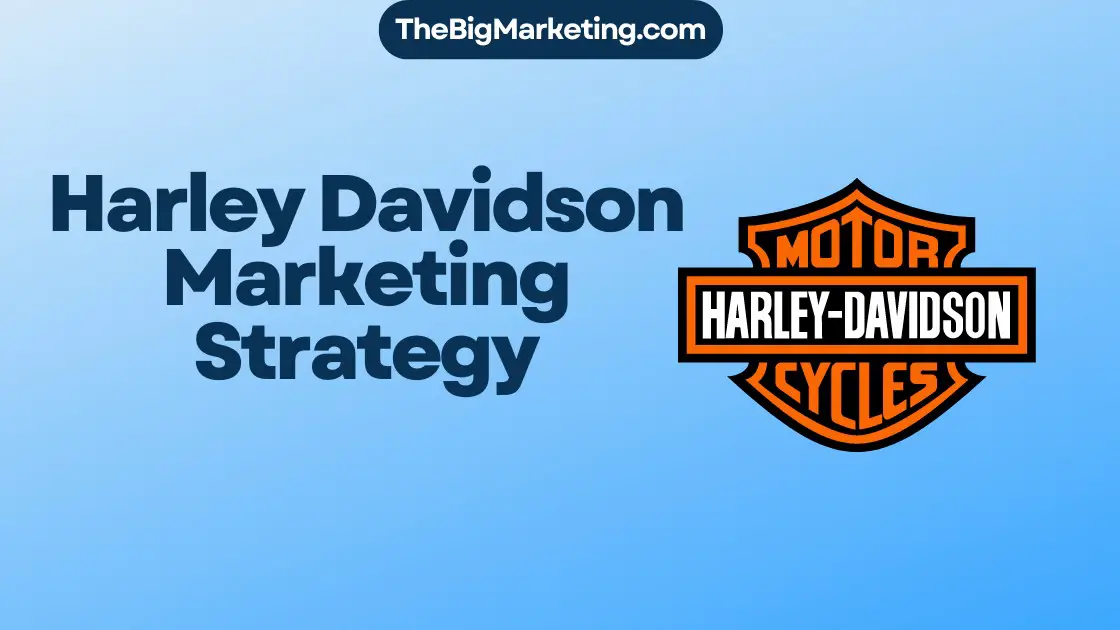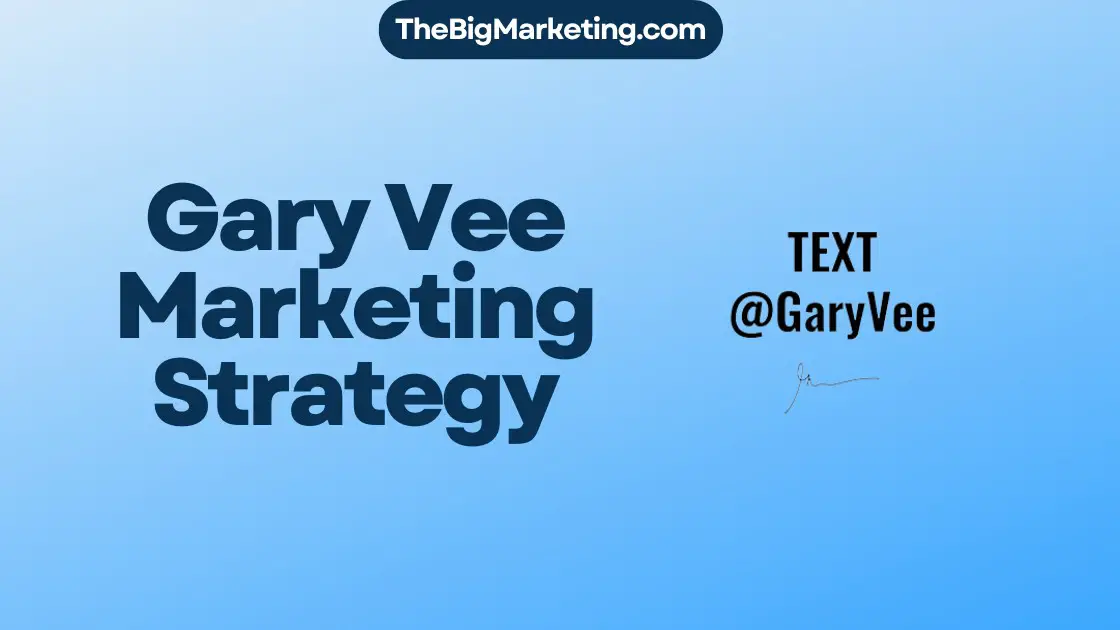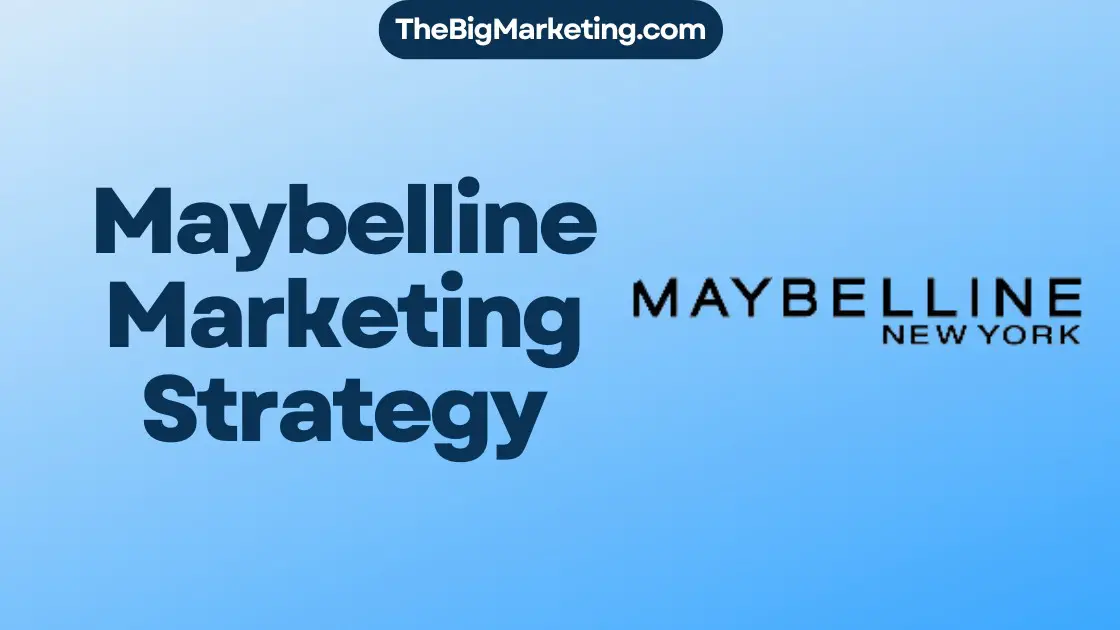Higher education marketing is a dynamic and ever-evolving field, where institutions strive to attract and engage prospective students in an increasingly digital world. In order to stay ahead in this competitive landscape, it is essential for higher education institutions to implement effective marketing strategies that resonate with their target audience.
From digital marketing for universities to education sector marketing strategies, there are various tactics that can be employed to promote higher education institutions and drive student enrollment. Campus recruitment marketing, higher education branding, student enrollment marketing, and online advertising for colleges are just some of the avenues that institutions can explore to reach and engage their desired audience.
Academic marketing campaigns and university promotional tactics play a significant role in shaping the perception of institutions and highlighting their unique offerings. By adopting innovative and data-driven marketing strategies, higher education institutions can effectively communicate their value proposition and attract students who are the right fit for their programs.
As the digital landscape continues to evolve, higher education institutions need to adapt their marketing strategies to meet the changing needs and preferences of prospective students. By leveraging technology, personalization, and various digital channels, institutions can create impactful marketing campaigns that capture the attention and interest of their target audience.
Key Takeaways:
- Effective marketing strategies are essential for higher education institutions to attract and engage prospective students in 2024.
- Digital marketing for universities, education sector marketing strategies, and online advertising for colleges are key areas to focus on.
- Campus recruitment marketing, higher education branding, and student enrollment marketing are vital for driving student enrollment.
- Academic marketing campaigns and university promotional tactics shape institutions’ image and attract the right students.
- Adapting to the digital landscape, leveraging personalization, and using technology are crucial for effective higher education marketing.
Leveraging Video Content Dominance
Video content has become a vital component of higher education marketing strategies, and in 2024, institutions have a tremendous opportunity to capitalize on the dominance of short-form videos. Platforms such as YouTube Shorts, TikTok, and Instagram Reels have revolutionized the way Gen Z students consume content, offering an ideal space to showcase campus life, virtual tours, and immersive experiences.
These short-form video platforms allow higher education institutions to capture the attention of prospective students and effectively engage them with visually compelling content. By leveraging the power of short-form videos, institutions can create a strong connection with their target audience, enticing them to explore campus life, academic programs, and extracurricular activities.
To further enhance the impact of video content, institutions can incorporate virtual reality (VR) and augmented reality (AR) techniques. VR allows prospective students to experience immersive virtual campus tours, while AR can bring textbooks and educational materials to life. By embracing these technologies, institutions can offer unique and interactive experiences that appeal to the modern student’s curiosity and desire for innovative learning methods.
By employing these video marketing strategies, higher education institutions can effectively showcase their campus life, attract the attention of prospective students, and differentiate themselves in the competitive landscape of student recruitment. Let’s explore some key platforms and techniques:
Platform 1: YouTube Shorts
- YouTube Shorts, a short-form video platform, offers a global reach and a dedicated audience eager to consume educational content.
- By creating engaging and informative Shorts, institutions can captivate viewers and spark their interest in enrolling.
- Shorts can highlight campus culture, interviews with faculty and students, and informative snippets that address common questions and concerns.
Platform 2: TikTok
- TikTok has exploded in popularity, particularly among Gen Z students, making it a powerful platform to engage with prospective students.
- Institutions can create entertaining and educational videos that showcase campus life, student testimonials, and unique programs.
- The use of trending challenges and collaborations with influencers can amplify reach and foster a sense of authenticity.
Platform 3: Instagram Reels
- Instagram Reels, a feature within Instagram, is another platform that captivates Gen Z students and offers a seamless way to promote campus life and academic opportunities.
- Through Reels, institutions can encapsulate campus highlights, student accomplishments, and behind-the-scenes glimpses into academic and social events.
- The use of creative editing, music, and relevant hashtags can increase visibility and engagement.
The visual nature of short-form videos captures the attention of today’s students and instills a sense of excitement and curiosity about higher education. Virtual reality and augmented reality further enhance the impact of video content, allowing prospective students to immerse themselves in the institution’s environment virtually. By leveraging these platforms and technologies, higher education institutions can effectively engage students and create a lasting impression of campus life and academic opportunities.
| Platform | Key Features | Target Audience |
|---|---|---|
| YouTube Shorts | Dedicated audience, global reach | Gen Z and millennial students |
| TikTok | Trending challenges, collaboration opportunities | Gen Z students |
| Instagram Reels | Seamless integration with Instagram, creative editing features | Gen Z and millennial students |
Hyper-Personalization for Effective Engagement
Hyper-personalization is a key driver in higher education marketing strategies for 2024. By leveraging data analytics and chatbot technology, institutions can tailor their content and ad campaigns to align with the specific interests and aspirations of diverse student personas. This level of customization enhances the overall experience for prospective students, increasing lead conversion rates and driving enrollment.
Through data analytics, higher education institutions gain valuable insights into student preferences, behaviors, and challenges. This data can inform the creation of personalized recommendations and targeted marketing campaigns that resonate with individual students. By delivering content that speaks directly to their needs and goals, institutions can foster deeper connections and engagement.
Chatbot technology plays a vital role in hyper-personalization, enabling institutions to deliver real-time and tailored support to students. Chatbots can provide immediate responses to inquiries, guide students through the admissions process, and offer personalized recommendations based on their unique profiles. This level of personalized assistance contributes to a positive user experience and builds trust with prospective students.
To illustrate the effectiveness of hyper-personalization, consider the following example:
Impact of Hyper-Personalization on Lead Conversion Rates
| Hyper-Personalization Strategy | Lead Conversion Rates |
|---|---|
| Generic Marketing Approach | 8% |
| Hyper-Personalization with Personalized Recommendations | 15% |
| Hyper-Personalization with Chatbot Assistance | 20% |
The table shows that adopting hyper-personalization strategies can significantly increase lead conversion rates. Institutions that implement personalized recommendations witness a 7% improvement, while those leveraging chatbot assistance experience a 12% increase in lead conversions.
By adopting hyper-personalization strategies, higher education institutions can successfully engage with their target audience, provide tailored solutions, and ultimately drive higher enrollment rates. The ability to understand and meet the unique needs of students plays a pivotal role in the success of any marketing campaign, and hyper-personalization delivers just that.
Embracing the Metaverse and Emerging Technologies
The metaverse and emerging technologies present exciting prospects for higher education marketing in 2024. By incorporating virtual reality (VR) and augmented reality (AR) into their strategies, institutions can offer immersive campus tours and program demonstrations, providing prospective students with a realistic firsthand experience of the institution.
Moreover, the integration of blockchain technology and non-fungible tokens (NFTs) in the education sector has the potential to revolutionize student experiences and enhance data security. Blockchain ensures the integrity and immutability of educational records, while NFTs can be used to certify unique achievements or digital artifacts, adding a sense of exclusivity and value to student accomplishments.
Institutions that embrace these technologies position themselves at the forefront of digital marketing, staying ahead of the competition and attracting tech-savvy students who seek innovative learning environments. It’s important for higher education institutions to proactively adopt emerging technologies and stay informed about their impact on credentialing and data practices to navigate the evolving landscape successfully.
Diversifying Social Media Beyond Facebook
Social media outreach is an essential component of higher education marketing in 2024. While Facebook has been a go-to platform for institutions, diversifying social media presence is crucial for reaching and engaging with the target audience effectively. By expanding beyond Facebook, higher education institutions can tap into platforms that resonate with Gen Z and millennial demographics, ultimately driving better results.
Expanding Reach with YouTube Shorts
YouTube Shorts has emerged as a popular platform for short-form video content, with a vast and engaged user base. Higher education institutions can leverage this platform to showcase their campus, programs, and student experiences through creative and engaging videos. By implementing a YouTube Shorts strategy, institutions can capture the attention of prospective students and generate buzz around their brand.
Captivating Gen Z with TikTok
TikTok is a sensation among Gen Z users, offering immense potential for higher education marketing. Institutions can create content that showcases campus life, student achievements, and academic offerings in an entertaining and authentic way. By understanding and utilizing TikTok trends and features, higher education institutions can gain significant visibility and connect with Gen Z on a platform they frequent.
Engaging Visual Content on Instagram
Instagram’s visual-centric nature makes it ideal for higher education marketing. Institutions can share captivating photos and videos of their campus, events, and student life, giving prospective students a glimpse into their vibrant community. Leveraging Instagram’s features like stories, reels, and IGTV can boost engagement and build a strong online presence.
Building a Community on Reddit
Reddit is a platform that allows for deep engagement and discussions. Higher education institutions can leverage relevant subreddits to contribute valuable insights, answer questions, and engage with prospective students on a more personal level. By becoming a trusted member of the community, institutions can position themselves as industry leaders and create meaningful connections.
Collaborating with Micro-Influencers
Micro-influencers, with their smaller but highly engaged following, offer higher education institutions an opportunity to reach niche audiences authentically. By partnering with micro-influencers who align with their values and target demographics, institutions can leverage their influence and expand their reach in a meaningful way. These collaborations can result in increased brand awareness and organic engagement.
Creating Interactive Content for Enhanced Engagement
Interactive content creation is gaining traction in the digital marketing landscape. Higher education institutions can develop quizzes, polls, contests, and interactive videos to encourage active participation and boost engagement. By integrating interactive elements into their social media content, institutions can captivate their audience and foster a deeper connection.
| Social Media Platform | Key Benefits for Higher Education Marketing |
|---|---|
| YouTube Shorts | An opportunity to showcase campus life and academic programs through short-form videos. |
| TikTok | The ability to capture the attention of Gen Z through engaging and trend-focused content. |
| A visually appealing platform to showcase campus events, student achievements, and community. | |
| A community-driven platform to engage with prospective students and share valuable insights. | |
| Micro-Influencers | A chance to reach niche audiences authentically through trusted individuals. |
| Interactive Content | The creation of quizzes, polls, and contests to boost engagement and foster a deeper connection. |
Prioritizing SEO and Content Marketing
Prioritizing SEO and content marketing is essential for higher education institutions in 2024. In order to effectively reach prospective students and drive organic search traffic, strategic keyword research and optimization are crucial. Additionally, mobile optimization is critical as students increasingly rely on smartphones for research and engagement.
Producing high-quality content, such as long-form articles, is another key aspect of effective SEO and content marketing strategies. This not only enhances engagement but also generates more backlinks, improving the institution’s online visibility.
By leveraging these strategies, higher education institutions can attract the right audience and enhance their overall visibility in search engine results. This ultimately leads to increased brand awareness and a higher likelihood of attracting qualified students.
The Importance of Keyword Research
Keyword research is the foundation of successful SEO and content marketing strategies. By understanding the keywords and phrases that prospective students are using in their searches, institutions can optimize their website and content accordingly.
Using tools like Google’s Keyword Planner or SEMrush, institutions can identify high-volume and relevant keywords related to their programs, courses, and other key areas of focus. This research helps inform the creation of content that aligns with the needs and interests of the target audience.
The Power of Long-Form Articles
Long-form articles, typically over 1,000 words, provide an opportunity to delve deeper into relevant topics and showcase the institution’s expertise. These articles not only help establish the institution as a thought leader but also provide more opportunities for keyword optimization.
When creating long-form articles, it’s important to incorporate relevant keywords naturally throughout the content. This helps search engines understand the context of the article and improves the chances of ranking higher in search results.
Additionally, long-form articles are more likely to attract backlinks from other websites, further improving the institution’s credibility and visibility in search engine rankings.
The Value of Backlinks
Backlinks, also known as inbound links, are links from external websites that point to a specific page or content on the institution’s website. These backlinks are an important factor in search engine algorithms and can significantly impact search engine rankings.
The quality and relevance of the backlinks are crucial. It’s important to focus on obtaining backlinks from reputable websites in the higher education or related industries. For example, a backlink from a well-established education publication or a high-ranking university website carries more weight than a random blog.
Building backlinks can be achieved through content outreach, guest blogging, or collaborating with other institutions or influencers in the education sector. By focusing on acquiring high-quality backlinks, institutions can improve their organic search visibility and attract more targeted traffic.
Mobile Optimization for Enhanced User Experience
In today’s digital age, mobile optimization is more important than ever. With the majority of prospective students using smartphones for browsing websites and conducting research, it’s crucial to ensure that the institution’s website is mobile-friendly.
A mobile-optimized website provides a seamless user experience, with easy navigation, fast loading times, and responsive design. This not only improves the user experience but also helps search engines index and rank the website more effectively.
The Role of High-Quality Content in SEO
Producing high-quality content is key to both SEO and content marketing success. High-quality content not only engages and informs the target audience but also demonstrates the institution’s expertise and credibility.
When creating content, it’s important to focus on providing value and addressing the needs and pain points of the target audience. This can be achieved through thorough research, well-crafted writing, and the inclusion of relevant examples, statistics, and case studies.
Additionally, high-quality content is more likely to be shared and linked to by others, further enhancing the institution’s online visibility and authority in the eyes of search engines.
Harnessing the Power of Email Marketing
Despite the rise of other digital marketing channels, email marketing remains a powerful tool in higher education marketing for 2024. With 72% of millennials preferring to receive promotional content through email, personalized email campaigns have higher open rates and substantial ROI. Email marketing allows institutions to nurture leads, keep students informed, and encourage applications. By harnessing the power of email marketing, higher education institutions can maintain direct communication with their audience and cultivate lasting relationships.
Benefits of Email Marketing in Higher Education
Email marketing offers several advantages for higher education institutions:
- Higher Open Rates: Personalized email campaigns have higher open rates compared to generic promotional emails, increasing the chances of capturing the attention of prospective students.
- ROI Generation: Email marketing provides a high return on investment (ROI) as it is a cost-effective way to reach a large audience. By crafting targeted and compelling email content, institutions can drive conversions and achieve their marketing goals.
- Lead Nurturing: With email marketing, institutions can nurture leads throughout the enrollment journey. By sending relevant and timely content, institutions can guide prospective students through the decision-making process and encourage them to take the next step.
Best Practices for Effective Email Marketing in Higher Education
To harness the full potential of email marketing in higher education, consider implementing the following best practices:
- Segmentation: Divide your email list into relevant segments based on demographics, interests, or stage in the enrollment process. This allows for personalized messaging that resonates with each group.
- Personalization: Customize emails with the recipient’s name, program of interest, or other relevant details. Personalized emails create a sense of individual connection and increase engagement.
- Compelling Subject Lines: Craft attention-grabbing subject lines that entice recipients to open the email. A strong subject line improves open rates and increases the chances of conversion.
- Mobile-Friendly Design: Optimize your email templates for mobile devices to ensure a seamless experience for mobile users. A responsive design enhances engagement and readability on smaller screens.

By implementing these best practices, higher education institutions can leverage the power of email marketing to effectively engage with prospective students, nurture leads, and drive enrollment.
| Email Marketing Benefits | Email Marketing Best Practices |
|---|---|
| Higher open rates | Segmentation |
| Substantial ROI | Personalization |
| Lead nurturing | Compelling subject lines |
| Mobile-friendly design |
Importance of Marketing for Higher Education Institutions
Marketing plays a crucial role in the success of higher education institutions. Effective marketing strategies are essential for attracting and enrolling students, generating revenue, and recruiting the right faculty and staff. By implementing strategic marketing initiatives, higher education institutions can increase their visibility, influence key stakeholders, and achieve their enrollment and recruitment goals.
Marketing for higher education institutions involves various aspects, such as:
- Student Enrollment: Marketing helps institutions attract and enroll the right students who align with their educational offerings and values.
- Revenue Generation: Through targeted marketing efforts, institutions can generate revenue by attracting prospective students and securing their enrollment.
- Student Recruitment: Effective marketing strategies enable institutions to reach prospective students through various channels and create awareness about their programs and campus life.
- Employee Recruitment: Marketing also plays a vital role in attracting and recruiting well-qualified faculty and staff members who contribute to the institution’s success.
By prioritizing marketing efforts, higher education institutions can enhance their brand reputation, increase student enrollment rates, and ultimately contribute to the growth and success of the institution.
Benefits of Marketing for Higher Education Institutions
Implementing marketing strategies in higher education institutions offers several key benefits:
- Increased Visibility: Effective marketing campaigns help institutions gain visibility among their target audience, including prospective students, parents, influencers, and the wider community.
- Enhanced Student Recruitment: By leveraging marketing tactics, institutions can reach and engage with prospective students, providing them with the necessary information to make informed decisions.
- Strong Brand Image: Marketing activities contribute to building a strong brand image for higher education institutions, signaling their quality, values, and unique offerings.
- Revenue Generation: Successful marketing initiatives increase student enrollment rates, contributing to the overall revenue generation for the institution.
- Competitive Advantage: A focused marketing strategy can give higher education institutions a competitive edge by highlighting their distinctive features and positioning them as a top choice among prospective students.
To illustrate the impact of marketing efforts, consider the following revenue generation data for a higher education institution:
| Year | Student Enrollment | Total Revenue |
|---|---|---|
| 2022 | 1,500 | $10 million |
| 2023 | 2,000 | $15 million |
| 2024 | 2,500 | $20 million |
As demonstrated in the table above, with effective marketing strategies, the institution’s student enrollment and revenue significantly increased over the years.
Effective marketing for higher education institutions is crucial in today’s competitive academic landscape. By investing in marketing, institutions can attract the right students, generate revenue, and strengthen their position in the higher education market.
Ways to Market Higher Education Institutions
Higher education institutions have a range of marketing tactics at their disposal to effectively promote their programs and attract students. While traditional marketing tactics like print ads, radio ads, TV ads, and campus visits continue to play a role in reaching potential students, digital marketing tactics have become increasingly important in today’s digital age.
Social media marketing is a powerful tool that allows institutions to engage with their target audience on platforms like Facebook, Instagram, Twitter, and LinkedIn. By creating compelling content and leveraging social media advertising, higher education institutions can effectively reach and engage with potential students.
Content marketing is another valuable strategy, focusing on creating and sharing relevant, valuable content to attract and engage a specific audience. By producing informative blog posts, articles, videos, and infographics, institutions can establish their expertise and build trust with prospective students.
Email marketing is a direct and personalized approach to engage with potential students. By sending targeted email campaigns with personalized content and CTAs, institutions can nurture leads, provide updates, and encourage applications.
Search engine optimization (SEO) is essential for higher education institutions to improve their visibility in search engine rankings. By optimizing website content, conducting keyword research, and building quality backlinks, institutions can increase their online presence and attract organic search traffic.
Paid advertising, including search engine marketing (SEM) and display ads, can also be effective in reaching a wider audience. By targeting specific keywords and demographics, institutions can drive traffic to their websites and increase brand awareness.
It’s important for higher education institutions to develop a well-balanced marketing plan that combines both traditional and digital tactics. By leveraging a mix of traditional marketing tactics like print and radio ads with digital marketing strategies such as social media marketing, content marketing, email marketing, SEO, and paid advertising, institutions can maximize their marketing efforts and effectively reach their target audience.
Higher Education Marketing Strategies for the Digital Age
As higher education institutions navigate the digital age, it is crucial to adopt innovative marketing strategies to effectively reach and engage with the target audience. In 2024, several key strategies will play a pivotal role in ensuring success in higher education marketing:
1. Refining Google Analytics 4 reporting
Google Analytics 4 (GA4) provides valuable insights into website traffic, user behavior, and conversion rates. By refining GA4 reporting, higher education institutions can gain a deeper understanding of their audience, optimize their marketing campaigns, and make data-driven decisions to achieve their marketing goals.
2. Preparing for a cookieless future
With increasing privacy concerns and stricter regulations, the future of online advertising will shift towards a cookieless environment. Higher education institutions should proactively prepare for this shift by exploring alternative tracking methods, such as first-party data and contextual targeting, to ensure their marketing efforts remain effective.
3. Creating an AI policy
The integration of artificial intelligence (AI) in marketing offers immense potential for personalized and targeted campaigns. However, it is crucial for higher education institutions to establish an AI policy that addresses ethical considerations, data privacy, and transparency to build trust with their audience.
4. Implementing a short-form video strategy
Short-form videos, such as YouTube Shorts and TikTok, have gained significant popularity among Gen Z and millennial audiences. By implementing a short-form video strategy, higher education institutions can showcase campus life, student experiences, and academic programs, creating engaging and shareable content to attract prospective students.
5. Utilizing responsive ads
In an increasingly mobile-driven world, responsive ads play a crucial role in capturing and retaining the attention of prospective students. By ensuring their ads are optimized for various screen sizes and devices, higher education institutions can effectively reach their target audience and drive engagement with their marketing campaigns.
6. Linking keyword and audience PPC strategies
Linking keyword and audience pay-per-click (PPC) strategies allows higher education institutions to target relevant keywords and tailor their ad campaigns to specific audience segments. This approach maximizes the impact of PPC campaigns, improves click-through rates, and increases the chances of conversion.
7. Incorporating personalized CTAs
Personalized call-to-actions (CTAs) can significantly enhance the effectiveness of marketing campaigns. By tailoring CTAs to align with the specific needs and preferences of prospective students, higher education institutions can increase click-through rates, improve lead generation, and drive a higher number of qualified inquiries.
8. Increasing search engine visibility
Improving search engine visibility is key to attracting organic traffic and reaching prospective students. By utilizing effective search engine optimization (SEO) techniques, such as optimizing website content, improving site speed, and building quality backlinks, higher education institutions can enhance their online presence and increase their chances of appearing in relevant search results.
By implementing these higher education marketing strategies for the digital age, institutions can stay ahead of the competition, effectively reach their target audience, and achieve their marketing goals in the dynamic landscape of the digital era.
| Marketing Strategy | Description |
|---|---|
| Refining Google Analytics 4 reporting | Gaining insights into website traffic, user behavior, and conversions through advanced analytics |
| Preparing for a cookieless future | Developing alternative tracking methods to overcome the limitations of cookie-based advertising |
| Creating an AI policy | Establishing guidelines for ethical AI use, data privacy, and transparency in marketing campaigns |
| Implementing a short-form video strategy | Creating engaging and shareable content on platforms like YouTube Shorts and TikTok |
| Utilizing responsive ads | Optimizing advertisements for various screen sizes and devices |
| Linking keyword and audience PPC strategies | Targeting relevant keywords and tailoring ad campaigns to specific audience segments |
| Incorporating personalized CTAs | Creating customized call-to-actions to improve click-through rates and lead generation |
| Increasing search engine visibility | Optimizing websites to improve organic search rankings and attract more traffic |
Conclusion
Effective marketing strategies are crucial for higher education institutions in 2024. By leveraging innovative tactics such as video content dominance, hyper-personalization, embracing emerging technologies, diversifying social media outreach, and prioritizing SEO and content marketing, institutions can engage and attract students effectively.
Furthermore, harnessing the power of email marketing and implementing various digital strategies can significantly enhance student enrollment and recruitment efforts. These strategies, supported by data and insights from the education marketing industry, ensure that institutions stand out in the competitive landscape and achieve their enrollment and recruitment goals with a positive Return on Investment (ROI).
In an ever-evolving digital age, higher education institutions must adapt to the changing landscape of student engagement. By employing these marketing strategies, institutions can effectively navigate the challenges and opportunities that arise in the higher education marketing realm, ensuring long-term success and achieving their desired outcomes.
FAQ
What is the importance of effective marketing strategies for higher education in 2024?
Effective marketing strategies help increase visibility, attract students, influence parents and influencers, and recruit well-qualified faculty. They can boost the institution’s profile, increase student enrollment rates, and generate revenue.
How can higher education institutions leverage video content dominance?
Higher education institutions can take advantage of the dominance of short-form videos on platforms like YouTube Shorts, TikTok, and Instagram Reels to showcase campus life, virtual tours, and immersive experiences. Virtual reality and augmented reality can further enhance the impact of video content and engage prospective students.
What is hyper-personalization, and how can it enhance student engagement?
Hyper-personalization utilizes data analytics and chatbot technology to tailor content and ad campaigns to align with the specific interests and aspirations of diverse student personas. By providing personalized recommendations and tailored support, institutions can enhance the overall experience for prospective students and increase lead conversion rates.
How can emerging technologies like the metaverse, virtual reality, augmented reality, blockchain, and NFTs benefit higher education marketing?
Emerging technologies offer new opportunities for higher education marketing. Virtual reality and augmented reality can provide immersive campus tours and program demonstrations, while the integration of blockchain and NFTs can revolutionize student experiences and enhance data security.
How can higher education institutions diversify their social media outreach beyond Facebook?
Higher education institutions can diversify their social media presence by utilizing platforms like YouTube Shorts, TikTok, Instagram, and Reddit. Collaborating with micro-influencers and creating interactive content can significantly increase engagement and reach with Gen Z and millennial demographics.
Why is prioritizing SEO and content marketing essential in higher education marketing?
Prioritizing SEO and content marketing helps institutions reach prospective students effectively and drive organic search traffic. Mobile optimization is critical as students rely on smartphones for research and engagement. Producing high-quality content, such as long-form articles, enhances engagement and generates more backlinks.
Why is email marketing still relevant for higher education institutions?
Email marketing remains a powerful tool in higher education marketing. With 72% of millennials preferring to receive promotional content through email, personalized email campaigns have higher open rates and substantial ROI. Email marketing allows institutions to nurture leads, keep students informed, and encourage applications.
How does marketing impact higher education institutions?
Marketing plays a crucial role in the success of higher education institutions. It helps increase visibility, attract students, influence parents and influencers, and recruit well-qualified faculty. Effective marketing strategies can boost the institution’s profile, increase student enrollment rates, and generate revenue.
What are the ways to market higher education institutions?
Higher education institutions can market themselves through traditional tactics like print ads, radio ads, TV ads, and campus visits. However, digital marketing tactics have become increasingly important. Social media marketing, content marketing, email marketing, SEO, and paid ads offer effective ways to reach and engage with the target audience.
How can higher education marketing strategies adapt to the digital age?
Higher education marketing strategies need to adapt to the digital age by refining Google Analytics 4 reporting, preparing for a cookieless future, creating an AI policy, implementing a short-form video strategy, utilizing responsive ads, linking keyword and audience PPC strategies, incorporating personalized CTAs, and increasing search engine visibility.





